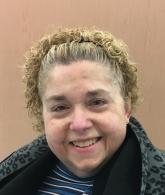A pesky eye lump
I was reading when my vision suddenly blurred the third week of October. Then my aide wiped a bit of mucus from my eye. I saw in the mirror there was a small lump in the middle of the lower rim that looked infected. the nurse practitioner looked at it the next day and said it was a stye. The following day, my doctor agreed it looked like a self-limiting stye.
When my sister visited two weeks later, the lump was still there. I asked my nurse if my doctor might allow me to get over-the-counter stye drops to help with the redness and itching. She was able to get my doctor's permission, but I was only allowed to use the stye drops for two weeks. As soon as I stopped, the itching resumed.
I became almost obsessed with getting rid of the lump. I searched for home remedies online and found many, including those on YouTube. Most recommend warm compresses to soften the lump. Some use sea salt to wash their eyes while others put castor oil or coconut oil on their eyes each night as a preventative measure.
Because I live in a nursing home, I could not try any of these remedies. By mid-December, the lump was still there and bothersome, so I saw an ophthalmologist. I asked him if he could remove or open the infected oil gland or hair follicle. He said he would have to treat me with an antibiotic with steroid for a couple of weeks first.
I have had this type of conjunctivitis or blepharitis before, back in my late 20s. It was a stressful time when my parents were both ill with cancer. Back then, the ophthalmologist had to remove six chalazia from underneath my right eyelid. After that, I had to wash my eyes with baby shampoo and use antibiotic ointment and/or drops to treat the symptoms. I could wash my eyes myself then, so I did it three or four times a day. The blepharitis and chalazia eventually went away.
I have been told that the neurological damage from my disability could make me more susceptible to blepharitis or chalazia. The antibiotic with steroid the ophthalmologist prescribed caused the lump to reduce in size. But when I finished the treatment, it was not gone.
In mid-January, my right eye became irritated and quite itchy, so I returned to the ophthalmologist. He said I had blepharitis or conjunctivitis. He prescribed a different antibiotic for two weeks.
Having blepharitis, conjunctivitis or chalazia is uncomfortable. If the lump is close enough to your eyeball, it can rub constantly when you blink. Aging and dry eyes make us more susceptible to these infections. Blepharitis is usually caused by poor hygiene. But my eyes are washed by the aides twice a day with baby soap. Since the lump appeared, the aides only used baby shampoo to wash my eyes.
After one week of treatment with the second antibiotic ointment, the lump decreased in size. Now nothing remains but a little red dot.
At my request, my doctor prescribed omega-3 fatty acids for me to take daily. Omega-3 fatty acids are supposed to increase moisture and may act as a preventative for blepharitis and chalazia. Because of eye dryness, I get eye drops once or twice a day. I also returned to using water-based facial moisturizer, which proved beneficial when I had eye lumps in the past.

Kathleen Mears is a long-time blogger who has been a nursing home resident for 21 years. She is an incomplete quadriplegic and uses a power wheelchair to get around. Her computer is her “window on the world.” This blog shares her thoughts and view of life as a nursing home resident as well as ideas of how it might be improved in the future.
Related Articles
Topics: Clinical











